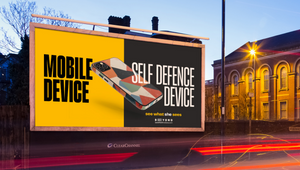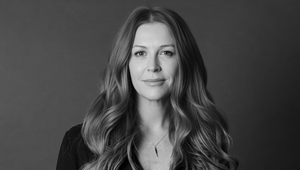
Surprise Me: Rebranding Weird to Get Fit for Feed

Weirdo. As insults go it’s undeniably a classic, hurled across playgrounds for millennia. Cutting on a deep, instinctual level, it throws into sharp relief the tightrope we balance between being deemed acceptable to the crowd or declared ‘other’.
To brands whose business is courting influence through mass appeal, weird feels even more risky. So the goal is to hop on trends and mimic culture to try and attract through social proof.
The tension lies in the knowledge that distinction and difference are pivotal to success, but the idea of standing out too much typically makes brand owners feel uncomfortable.
It shouldn’t though. We get bored easily and we want to be entertained, so there’s a solid argument that weird is good. We need weird. It’s what makes something noticeable and interesting enough to talk about.
And being interesting enough to be talked about is increasingly difficult. People - of all ages - are plugged across more channels than ever, forming an ever more discerning and fickle audience who have never had so much access to the next entertaining thing from so many creators, big and small.
Duolingo is a brand that’s leant into weirdness through personality in order to cut through. From their Owl mascot holding a seance with other mascots, to leaning into the brand’s ‘overbearing’ reputation to delight Redditors by reminding them he knows where they live, to tapping into Charli xcx’s brat culture, Duolingo has embraced dialling things up to stop thumbs skipping past their socials.
In the natural order of things, the feed has become weirder in the fight for our attention. Advertising fades against the backdrop unless it is truly worthy. It’s been said before, but it should be shouted from the rooftops: our competition is Netflix. And even Netflix designates teams to design viral launch strategies within this intensified landscape.
The only way you can hope to win is by becoming comfortable with getting weird.
And we can do that by reframing what weirdness means to us.
From unusual, to surprising.
Every brand can benefit from being more surprising because to surprise is to be more distinct, more memorable, salient.
Surprise is relative to the brand and category, so every brand can show up in a surprising way - it’s not about a bank going completely off the wall in its comms, for example, and risking losing trust.
It’s about realistically assessing what it takes for your message to stand out from your competition so that your audience stops scrolling and takes notice.
Klarna got kooky by unexpectedly sending a salmon down a slide. There are a million ways to bring ‘smoothness’ to life, but committing to visual distinction makes their message attention-worthy within a category crowded with experience messaging.
Tesco caught our attention with a Food Love Stories campaign that dramatised the discomfort of co-parenting in a soundtrack-free spot that is more memorable and arresting for having chosen awkwardness over idealisation or cliché.
Elf turned heads by partnering with Liquid Death in an unhinged collaboration that perfectly raised the profile of both brands through unexpected partnership and by delighting gen z through their signature absurdist humour and a touch of nihilism.
Heineken piqued interest in this classic radio spot by building a picture of a curiously unexpected scenario (‘The International Festival of Mime’) and playing with pacing and delivery, ultimately entertaining enough to be rewarded with active, involved listening.
For advertising to be effective, it has to surprise us in some way - if it doesn’t, it’s just boring and forgettable.
So the next time you’re working on a brief or sitting in a review, ask yourself; how can we make this more surprising (a little weirder)?
Believe me, you want to be labelled a weirdo for the work that you create. It’s a good thing.















